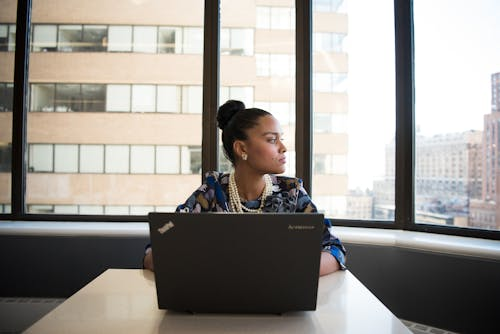We all know that the COVID-19 pandemic has fundamentally changed the way we work. The pandemic has touched every area of our lives, and work is absolutely no exception. But because the pandemic isn’t over yet, and we’re still living through some of the monumental changes it has brought about, it can be challenging to step back and understand just what the future has in store.
One thing we can say with relative certainty is that COVID has permanently changed the way we work. A year and a half of stress and anxiety, combined with the social isolation public health measures have demanded, have re-oriented our collective priorities. Work-life balance is more important to us now, as is the ability to work remotely or on a flexible schedule. Many people who previously thought they’d be unable to work remotely learned that, in actuality, they could do their jobs remotely without any major setbacks. But though these changes have been major, they still make up for only a surface-level look at the evolution of work over the last two years. Let’s dig into some of the less obvious, deeper changes to work we’re seeing.
COVID’s impact on work
The rise of remote work
In March of 2020, when the severity of the pandemic began to dawn on Americans, many businesses moved their operations to a remote work model to reduce employees’ risk of COVID-19. As the pandemic has passed through several phases since then, some employers have maintained virtual work policies, while others have returned to in-person work, either entirely, or on an alternating schedule. It’s also worth noting that for millions of workers, remote work is simply not an option, and in many cases, it’s these people who have been sickened in large numbers during the pandemic.
Still, in terms of large-scale trends, it’s impossible to deny that the pandemic has brought about a new era of remote work as normal. Before the pandemic, only 6% of people said they worked from home most or all of the time. In October of 2020, that number was 70%. Of course, this is a dynamic indicator, and it fluctuates as case counts rise and fall. But companies that previously ruled remote work out as a matter, of course, have changed their tune, and many candidates are only looking for jobs with remote or flexible work schedules.
Disparities in risk by career status
The pandemic has highlighted existing inequalities in our society. The gap between the lifestyle and benefits available to white collar workers and that available to working-class people became more obvious than ever with the shift to remote work. White collar workers were usually able to work remotely, not only keeping their COVID risk minimal but also saving money that they’d otherwise spend on gas, work clothing, and other expenses. Meanwhile, working-class people and frontline workers like delivery drivers and grocery store employees had no choice but to continue going to work, often exposing them to COVID. Widespread unemployment hit blue collar workers much harder than white-collar workers. This inequality of impact has ramifications beyond economic cost as well, since women and people of color work most of the low-wage jobs in our country.
Large-scale unemployment lingers
At the beginning of the pandemic, the unemployment rate reached an astonishing 14.8%. As we’ve discussed, many of these early losses were in industries heavily impacted by the pandemic, such as service and hospitality. But even with unprecedented government financial intervention, many of these jobs haven’t been restored, and long-term unemployment is not uncommon. The labor force participation rate still lags behind where it was pre-pandemic, in January of 2020. This, too, represents lingering inequalities; women lost 1 million more jobs during the pandemic than men.
The great resignation threatens economic recovery
Ironically, now that the worst of the COVID-19 economic recession is behind us, millions of Americans have quit their jobs. Workers are overwhelmed with stress and burnout, and disillusioned with the continuing pandemic. Companies can’t fill vacancies despite the fact that unemployed people outnumber job openings by more than a million. With inflation rising and supply chain shortages looming ahead of the holiday season, we may see the economy falter in the coming months.
Public health liability for companies
Also adding a layer of complexity to the economic recovery is an increased burden of liability on companies when it comes to managing the health of their employees. COVID-19 is a hazard found in every workplace in America, and because it represents a clear threat to employee health, it is the responsibility of employers to create comprehensive COVID safety plans in order to keep employees safe. This is a key piece of the calculation when deciding when, and whether, to return to in-person work. Local and statewide mask mandates usually require that places of business, rather than law enforcement, ensure that everyone is masking up indoors. This places the legal responsibility of making sure a workplace is COVID-free on the employer.
COVID vaccination requirements for employers
This public health responsibility had many companies playing it safe with remote work policies and requirements for regular testing or vaccination. Then, in recent weeks, the Department of Labor has announced that companies that employ more than 100 people will be required to have a mandatory vaccination policy. This requirement will cover about two-thirds of private sector employees, so it may boost American vaccination rates, which have slowed in recent months. Increased rates of vaccination would reduce the burden on our healthcare system and improve health outcomes for those at risk of severe COVID-19 complications. Still, as with mask mandates, the responsibility for enforcing vaccination among employees falls to employers. In today’s difficult labor economy, and with the politicization of vaccines, there is a chance that these new vaccine requirements will cause some workers to quit or refuse to participate. Unfortunately, 90 million eligible Americans are still unvaccinated, and it’s unknown whether corporate policies will be the thing to change their minds.
It’s impossible to say exactly what the future has in store, especially during this tumultuous labor market. But with vaccines widespread and the fourth wave of COVID finally receding, there’s reason to hope that we are emerging from the pandemic crisis. Our best chance at seeing it through to the other side is remembering what works when times get tough: great talent. If your organization is struggling to hire right, reach out to one of our recruiters to see how we can help.








